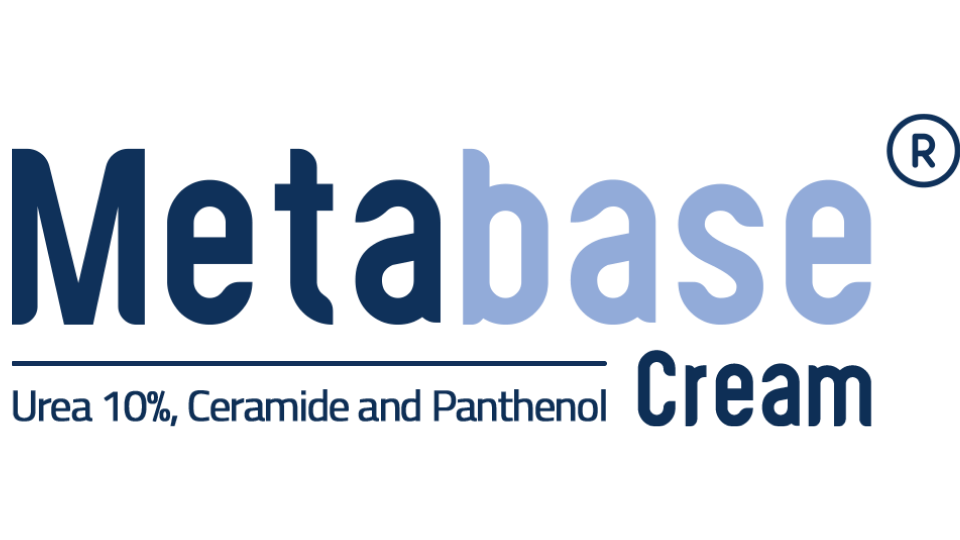
urea
1- What is Urea?
Urea is a naturally occurring substance found in the outermost layer of the skin, known as the stratum corneum. It is a key component of the Natural Moisturizing Factor (NMF), which helps the skin stay hydrated, smooth, and protected. Urea is naturally produced in the body as a breakdown product of amino acids and plays a critical role in maintaining skin hydration.
Medically, synthetic urea has been used in dermatology for decades due to its strong hydrating and skin-softening properties. It is commonly found in creams formulated for dry, rough, and compromised skin.
2. How does Urea work?
At a concentration of 10%, urea works through multiple mechanisms to deeply hydrate the skin, improve its texture, and support skin health:
- Humectant Effect: Urea attracts moisture into the outer skin layers and helps retain it. This improves hydration and reduces dryness, especially in low-humidity environments. It also reduces transepidermal water loss (TEWL), helping the skin maintain its moisture balance.
- Smoothing and Softening: Urea gently breaks down hardened or dead skin cells, making them easier to shed. This reduces flakiness and smooths rough patches without causing irritation.
- Supports Healthy Skin Turnover: Urea helps regulate skin cell production. It slows down excessive cell buildup and promotes normal exfoliation, which is especially beneficial in conditions like psoriasis and ichthyosis.
- Strengthens the Skin Barrier: Urea supports the skin’s ability to produce lipids and proteins needed for a strong barrier. It also helps improve the skin’s defense against irritation and microbes by enhancing the activity of antimicrobial peptides.
- Helps Other Treatments Work Better: Urea increases skin permeability, allowing other topical treatments — like corticosteroids or antifungals — to penetrate more effectively.
3. Clinical Benefits of Urea
- Deep hydration: Improves water retention in the upper layers of the skin.
- Texture improvement: Softens rough, dry, or thickened areas like heels, elbows, and hands.
- Relieves discomfort: Reduces sensations of tightness, itching, and scaling.
- Non-irritating exfoliation: At 10%, urea gently assists with natural cell shedding, improving clarity and smoothness.
4. Benefits for Specific Skin Conditions
Clinical studies and dermatological guidelines support the use of urea in several chronic skin conditions:
- Atopic Dermatitis (Eczema): Improves hydration, reduces itch, and supports long-term remission when used alongside anti-inflammatory therapies.
- Psoriasis: Helps soften plaques and reduce discomfort from scaling and dryness.
- Keratosis Pilaris: Smooths rough bumps and improves overall texture.
- Ichthyosis Vulgaris: Helps reduce thick scaling and enhances hydration.
- Diabetic Foot Xerosis: Maintains softness, reduces fissure risk, and protects against further skin damage.
- Post-Procedure Skin (e.g., lasers or peels): Calms and hydrates irritated skin, accelerating recovery.
5. Urea in Metabase Cream
In Metabase Cream, Urea is included at the clinically proven 10% concentration — the sweet spot for maximizing hydration and barrier support without causing irritation. It works synergistically with other actives like Panthenol, Ceramides, and Allantoin to soothe, protect, and restore even the most sensitive skin types.
6. Safety and Tolerability
Urea at a 10% concentration is generally considered safe and non-sensitizing for most individuals, even with long-term use. Its tolerability makes it suitable for adults and adolescents, individuals with sensitive or reactive skin, and for application on various areas of the body, including hands, feet, elbows, and the body. When used in a well-formulated product, the risk of irritation is minimal.
